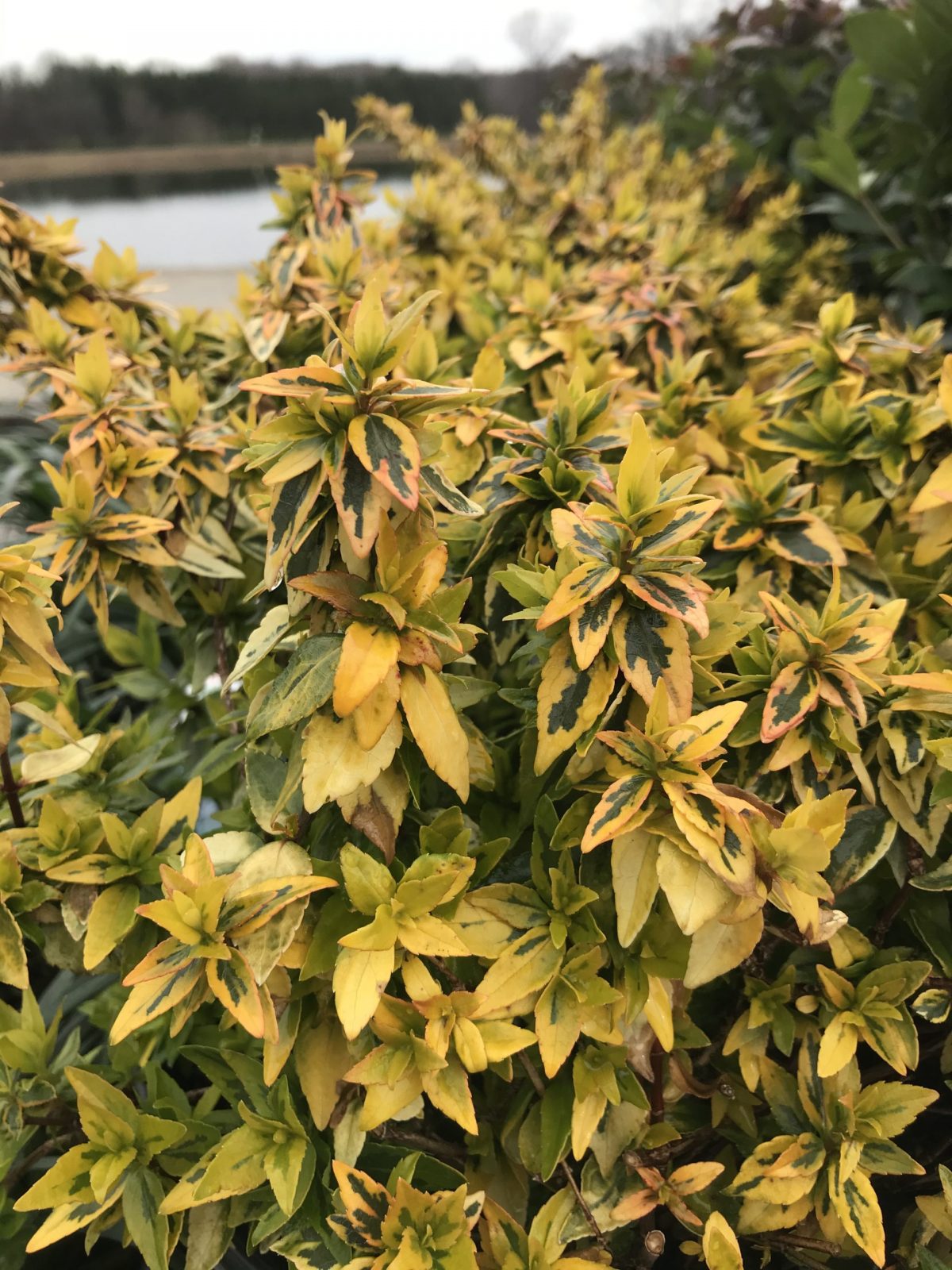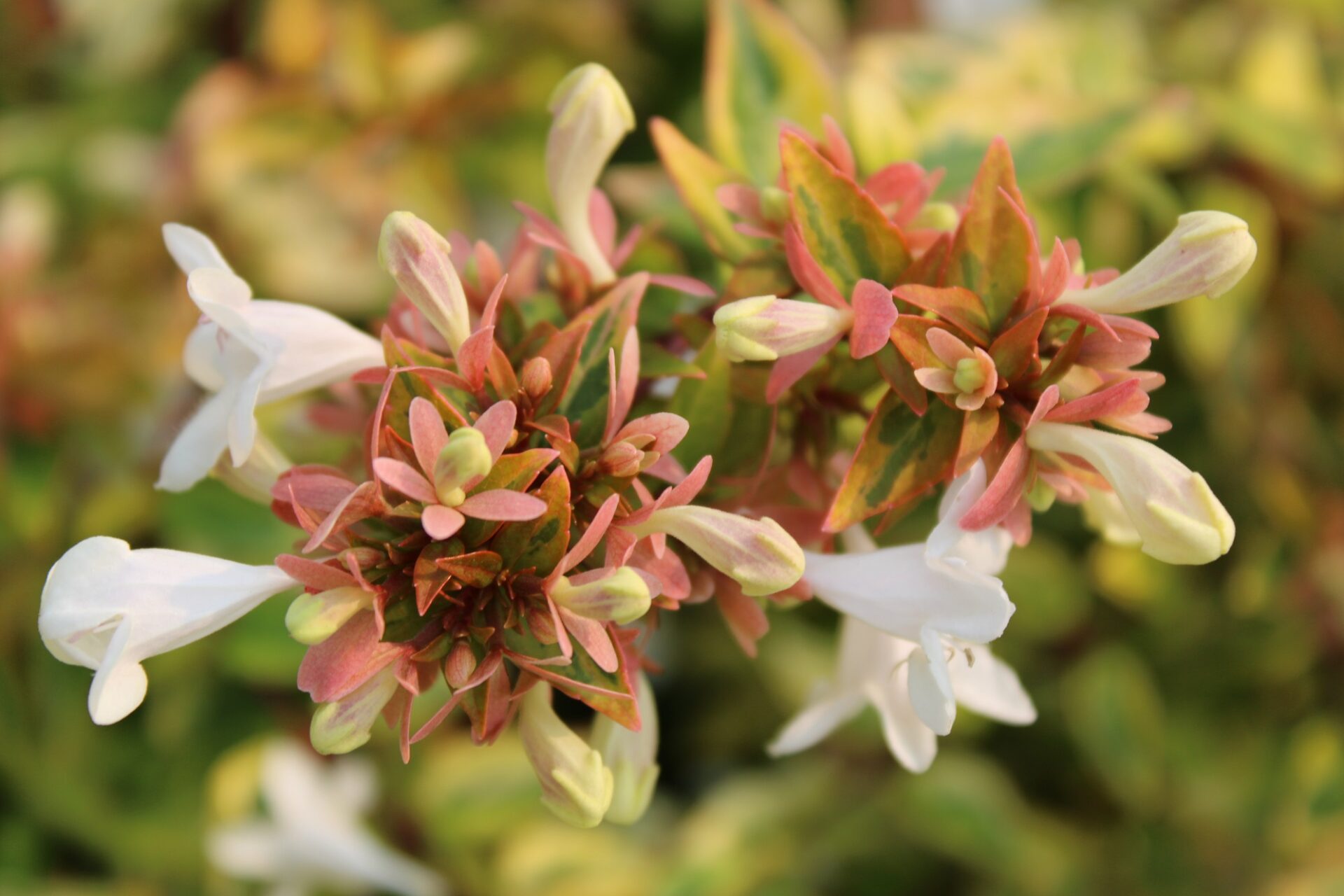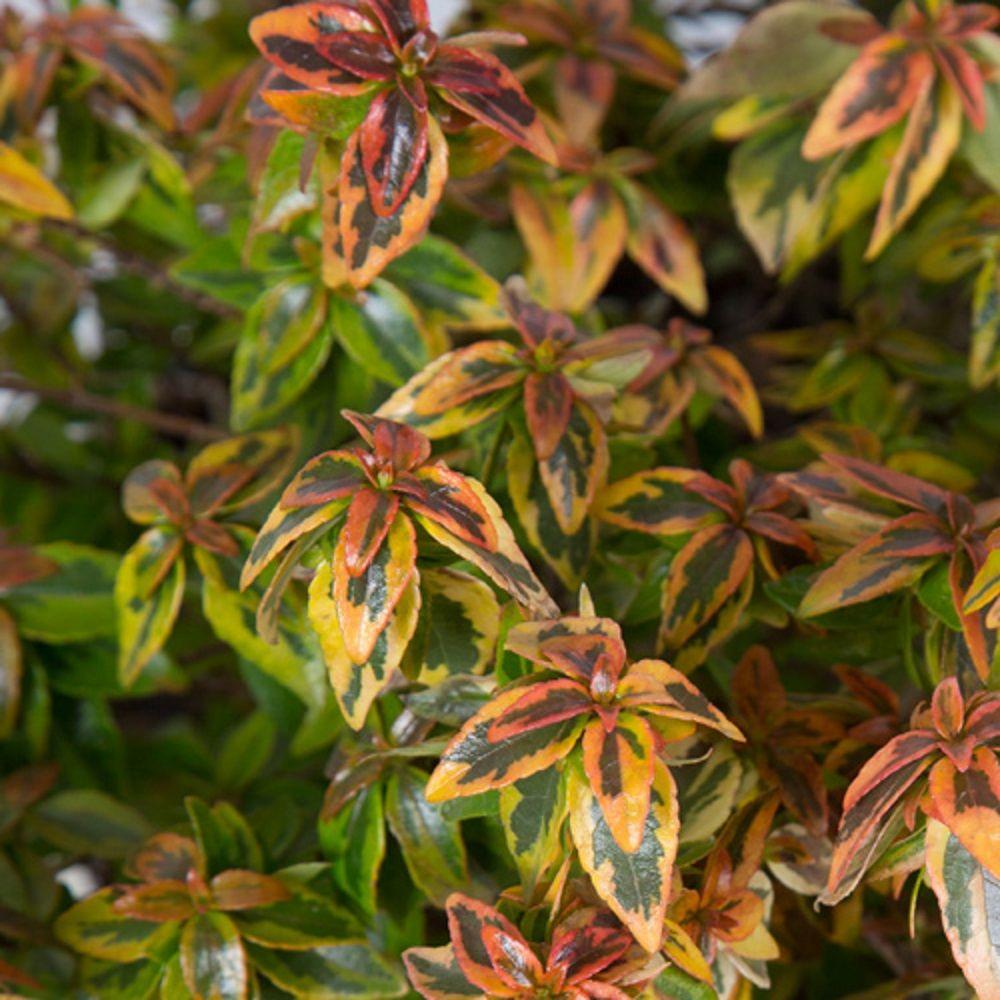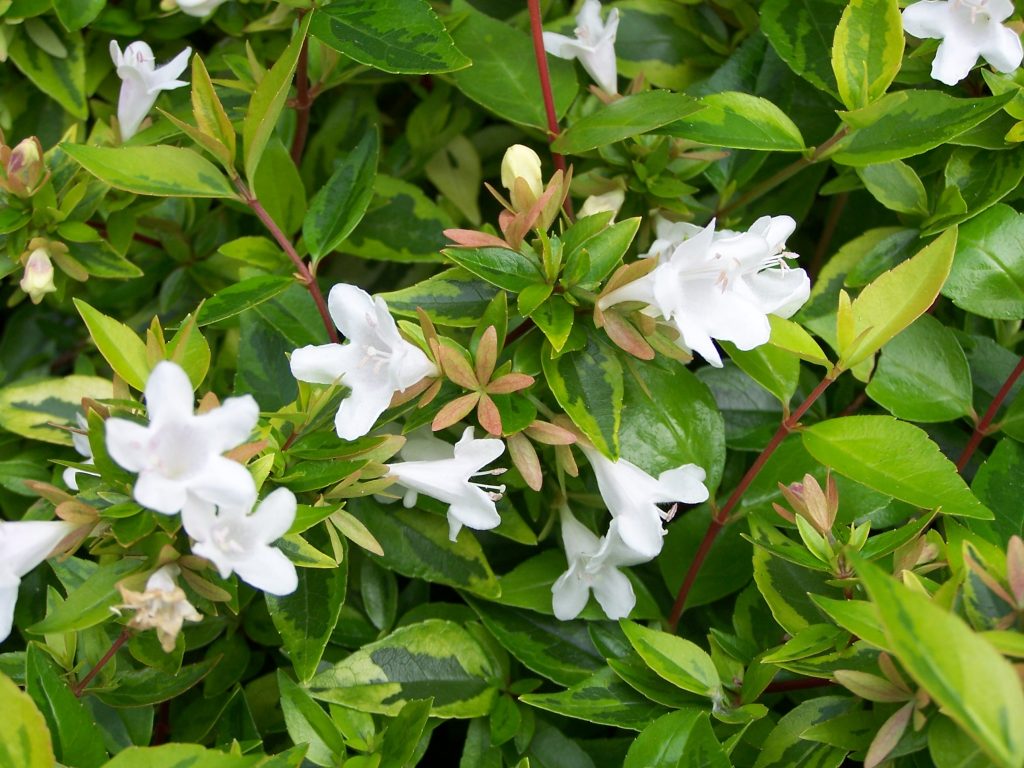
Kaleidoscope Abelia makes a useful small-growing shrub used in a variety of locations in the landscape. In zones 8 and 9 where winter temperatures are consistently warm, it isn’t unusual for the shrub to grow arching branches that are 6 feet in length.

In addition, though its arching branches give the shrub a more natural appearance and flow, you may need to give it a good shearing every three to four years.Īlthough Kaleidoscope Abelia generally averages around 4 feet tall, those living in the warmest sections of its hardiness range can usually expect taller plants. If your plant died down to the ground or some of the branches died during winter’s cold, wait until early spring to trim off the dead portions, as some sections may seem dead but are still alive.

Kaleidoscope Abelia blooms on new wood, so give it a good pruning in late winter or early spring. If your winters are extremely cold, plant Kaleidoscope Abelia in a protected location and pile mulch up around the base of the plant to help protect the root system.

Kaleidoscope Abelia still blooms the following spring, but the shrub may be smaller. However, those living in the coldest portions of its range can see the shrub die down to the ground during a snow-filled winter when temperatures hit zero, but don’t despair, as it will spring back to life once the warm temperatures of spring arrive. The shrub has no serious problems with diseases or pests, making it not a fussy garden addition. It is hardy in a wide variety of climate ranges, and takes the cold as well as the heat and is relatively tolerant to drought conditions. Between Kaleidoscope Abelia’s low-growing habit, hardy nature and low maintenance requirements, it is a good choice for the lazy gardener or for those who feel they kill every plant they touch. This makes the shrub a perfect choice to plant on a patio or in an area where its sweet aroma can be appreciated. Clusters of ¾-inch bell-shaped flowers form at the end of the stems in colors tinged in pink and white. One of the best attributes of Kaleidoscope Abelia is its long lasting and fragrant blooms that arrive in late spring and continue into the fall. During fall, the foliage takes on fiery hues of orange and red, bringing eye-catching attention wherever it’s used in the garden. During the growing seasons of spring throughout summer, the small, glossy and variegated leaves attached to red stems are mixed with gold, white and green. Its name Kaleidoscope tells you everything you need to know about the chameleon-like foliage. Kaleidoscope Abelia grows around 3 feet tall and up to 4 feet wide at maturity. Useful as an informal, low-growing hedge or screen.A relative in the honeysuckle family, Kaleidoscope Abelia produces graceful, arching branches and clusters of fragrant flowers, making it a welcome and attractive addition to the landscape. However, as its hardiness range starts becoming colder, the shrub performs as a semi-evergreen and in the coldest locations where it’s hardy, a deciduous shrub. In the warmest locations within its hardiness zones, it performs as an evergreen. If you are looking for a small growing and easy to grow shrub that puts on a fall show with its elaborate color, then Kaleidoscope Abelia is the plant for you. We've gotta protect good ole' Mother Nature, after all.

While we wish we could serve everyone, it's for the safety of native species and helps prevent the spread of invasive disease & pests. The short & sweet answer is: "United States Department of Agriculture Restrictions." Every state has their own unique USDA restrictions on which plants they allow to come into their state. You will receive email notifications along the way on the progress of your order, as well as tracking information to track your plants all the way to their new home! Why are some states excluded from shipping? Orders typically ship out within 2 business days. How does the delivery process work?Īll of our orders ship via FedEx Ground! Once your order is placed online, our magic elves get right to work picking, staging, boxing and shipping your trees. You'll find we carry young 1-gallons, up to more mature 7-gallons ranging anywhere from 6 inches to 6ft. While the industry-standard terminology is to call the sizes "Gallon Containers", that doesn't exactly translate to the traditional liquid "gallon" size we think of. Nursery containers come in a variety of different sizes, and old-school nursery slang has stuck. All tree, and nothin' but the tree! We measure from the top of the soil to the top of the tree the height of the container or the root system is never included in our measurements.


 0 kommentar(er)
0 kommentar(er)
